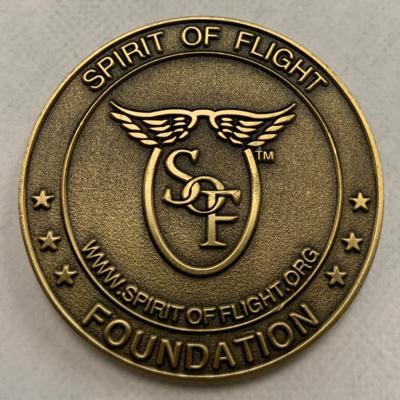Idaho’s Spirit of Flight Museum Acquires Culver PQ-14
Nampa, Idaho’s Spirit of Flight Foundation museum announced on 28 February 2023 that a rare WWII era Culver target drone has been donated to the museum’s collection.

Spirit of Flight Foundation president Gordon Page stated: “We have had a Culver PQ-14 Target Drone on our wish list for years, but there aren’t many left of the over three-thousand built.”
In 1940, the U.S. Army Air Corps requisitioned a radio-controlled target drone to aid in the training of anti-aircraft artillery gunners. Culver answered the call with the PQ-14, sometimes called the Turkey.
First flown in 1942 and delivered to USAAC training units shortly thereafter, the PQ-14 was a radio-controlled contraption that could be flown by human pilots on cross-country ferry flights. The business of piloting the Turkey was a crude one, accomplished by dint of a rudimentary, installed-on-the-spot instrument panel and a seat consisting of a tub in which the aviator placed his parachute, then sat upon it for the duration of the flight.
Disconcerting as such a concept may be to modern aerospace sensibilities, reverting the PQ-14 to radio-control was accomplished by throwing a single simple lever.
“It’s bigger than you think,” Mr. Page added. “The wingspan is thirty-feet and it’s pretty heavy because of the plywood wooden structure, but I hear it was easy to fly. Without a pilot they were flown from a mother-ship aircraft.”
Most of the Culver target aircraft were blasted out of the sky by U.S. Army anti-aircraft gunners, but a dozen or more survived and passed into military surplus after 1950. In 2023, only five Culver PQ-14s remain registered with the FAA.
The PQ-14 bound for the Spirit of Flight Foundation museum was donated by a generous party who possessed a specimen of the wooden oddity that had—by the grace of whatever strange gods look after screwy machines—weathered untold barrages of anti-aircraft fire and survived into the 21st Century.
“We are excited to get the drone shipped to the Spirit of Flight in Nampa, Idaho,” Mr. Page asserted. “We have some work to do once we get it to the museum, but it should go fast and it will eventually hang from the museum ceiling.”
The Culver PQ-14 will complement a restored Northrop KD2R5 Shelduck target drone currently on display at the museum.
Former Top Gun instructor and museum volunteer John Flanagan opined: “Spirit of Flight has done a wonderful job setting up an amazing collection at the Nampa Municipal Airport. The addition of the new Culver target drone just adds to the incredible stories and displays.”

The Spirit of Flight Foundation has established a PQ-14 project and cordially invites museum supporters and lovers of aviation history to donate to the rare target drone’s restoration. Information germane to the museum and current funding efforts can be had by visiting the museum’s south-western Idaho location or www.spiritofflight.org .
“We will document the PQ-14 recovery, transport, and restoration on our Chasing Planes YouTube channel,” Mr. Page enthused. “We will also be giving away some PQ-14 collectables to subscribers, so stay tuned!”
Founded in 1998, the non-profit Spirit of Flight Foundation features over 2,500 aviation artifacts at its museum facility in the picturesque town of Nampa, Idaho. Aircraft in the collection include a James Bond BD-5 jet, a 1947 Race Plane built by Art Chester, a 1936 Lockheed 12A, and a Radioplane target drone, built in the selfsame Van Nuys, California factory in which U.S. Army photographer David Conover discovered Marilyn Monroe. Conover had been dispatched to the Radioplane factory by the U.S. Army Air Force’s First Motion Picture Unit with orders to shoot morale-boosting pictures of female workers. The rest …
 Bolen Gives Congress a Rare Thumbs-Up
Bolen Gives Congress a Rare Thumbs-Up The SportPlane Resource Guide RETURNS!!!!
The SportPlane Resource Guide RETURNS!!!! Buying Sprees Continue: Textron eAviation Takes On Amazilia Aerospace
Buying Sprees Continue: Textron eAviation Takes On Amazilia Aerospace Hawker 4000 Bizjets Gain Nav System, Data Link STC
Hawker 4000 Bizjets Gain Nav System, Data Link STC Echodyne Gets BVLOS Waiver for AiRanger Aircraft
Echodyne Gets BVLOS Waiver for AiRanger Aircraft




